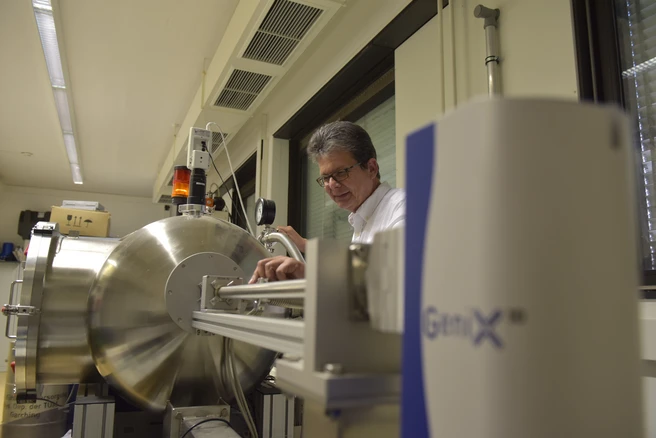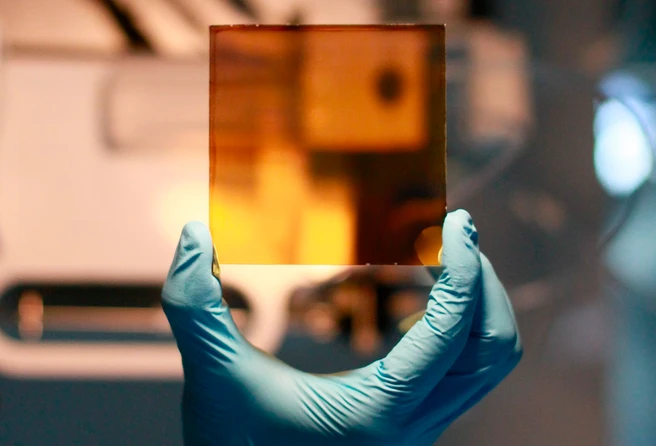Prof. Peter Müller-Buschbaum’s team at the Technical University of Munich School of Natural Sciences collaborates with an international group of top experts to explore how to make more efficient, sustainable, and cost-effective solar cells. With colleagues in China, Japan, and the United States working in concert, they have made significant progress advancing quantum dot solar cell technologies. Their progress has been published in a recent issue of Nature Energy.
Quantum dot solar cells use nanoscale semiconductor particles, called quantum dots, to enhance light absorption and energy conversion in solar panels. These particles have unique optical and electronic properties because of their small size, differing from their bulk counterparts. In these solar cells, quantum dots act as light-absorbing and charge-carrying materials, potentially improving efficiency compared to traditional solar cells. Müller-Buschbaum and colleagues’ work advances the development of this technology further.
By applying an innovative chemical solvent engineering technique, the new colloidal quantum dots (CQD) ink -- the solution that distributes the material onto semiconductor films orderly and efficiently -- enables the production of solar cell modules with an area of 12.60 cm² and an impressive power conversion efficiency of over 10% at this scale. Particularly noteworthy are the reduced costs for the active material, which amount to only US$0.06 per watt-peak – a savings of 94.5% compared to conventional methods (see figure 4d in doi.org/10.1038/s41560-025-01746-4 for further information).
Furthermore, the CO₂ emissions during the production of CQD solar modules were drastically reduced, highlighting the technology’s environmental friendliness and the benefits of using a solution chemistry engineering strategy to simplify the process. Prof. Müller-Buschbaum includes sustainability early in research projects, “It is very important when you come up with something new that you should build in the life-cycle analysis from the beginning.”
Müller-Buschbaum and his former doctoral student Wei Chen (now Associate Professor of Energy & Photonics at Shenzhen Technology University in China) have a broad view of the entire research project, however, to reach this level of scientific discovery, they focused on what they do best: Grazing incidence small- and wide-angle X-ray scattering, advanced scattering techniques to quantify the mesoscale morphology and crystalline structure to optimize the solution chemistry when preparing the CQD inks. “These special scattering methods allow for very precise information about the printed quantum dot films, which is key to see how a different chemistry improves the quality of the ligand exchange to minimize defects and problems that lead to inefficiency,” says Müller-Buschbaum.
These advances mark an important step toward cost-effective and sustainable solar energy and open new possibilities for the industrial application of CQD-based electronic devices. This breakthrough in introducing this news class of QD solar cells could revolutionize the future of solar energy and demonstrates the enormous potential of quantum dot technologies for large-area and cost-efficient applications.
Publication
G Shi, W Chen, P Müller-Buschbaum, et al. Overcoming efficiency and cost barriers for large-area quantum dot photovoltaics through stable ink engineering. Nature Energy. doi.org/10.1038/s41560-025-01746-4
More information and links
- Prof. Müller-Buschbaum, Chair for Functional Materials
- TUM graduate Prof. Wei Chen’s Energy & Photonics Lab at Shenzhen Technology University, China https://chensztu.github.io/
Contact for this article
Prof. Peter Müller-Buschbaum
Technical University of Munich
TUM School of Natural Sciences
Chair for Functional Materials
Tel. +49 89 289 12451
https://www.ph.nat.tum.de/en/functmat/about-us/
Press contact


